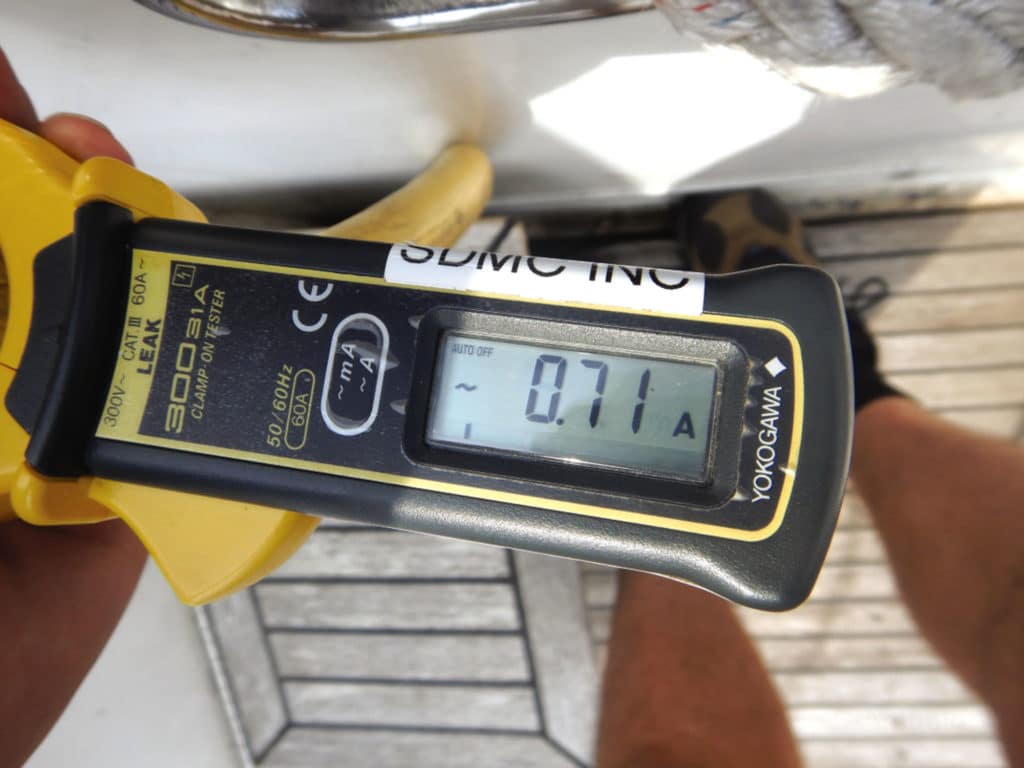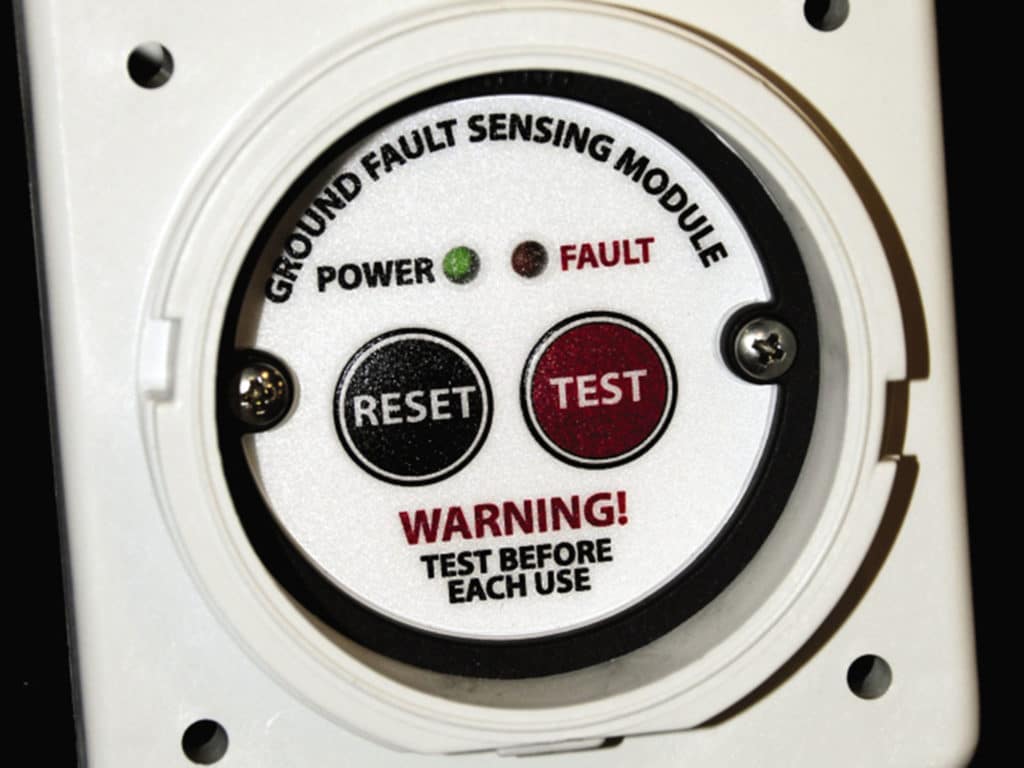
Recently, walking down a dock to meet a client, I encountered a marina employee who was snapping an “amp-clamp” digital multimeter around shore-power cords, making notes at each one. She explained: “I’m measuring leakage current at each boat.
We do this monthly and then let boat owners know they have seven days to correct anything that’s not right.” She added that “anything over 30 milliamps” constituted “not right” and that the power was shut off if not addressed.
“Are you an American Boat and Yacht Council-certified electrician?” I wondered.
Turned out she was a retired schoolteacher.
While her intent was noble, if not done properly, the results of such tests are of little value; they could be turning off power to vessels that have no faults whatsoever, which achieves nothing other than angering boat owners.
The 30-milliamp part of the test does have some validity, but it’s nuanced; 30mA is the equipment leakage circuit interrupter (ELCI) trip threshold.
When leakage exceeds that threshold (and it’s from your boat; more on that in a moment), it confirms an ELCI can’t be used, which is a problem. The next threshold is 100mA; in fresh water that signals the potential for electric shock drowning (ESD). In seawater, the figure is 500mA, where heat generation has the potential to start a fire.
All of these readings must be measured on the shore cord of the vessel in question.
Then there’s this: No one should swim around docks energized with shore power. ELCIs can be thought of as a whole-vessel ground fault circuit interrupter (GFCI) for the outlets used in galleys, heads, engineering spaces and on deck, with one significant difference: The latter trip at a very low 5-milliamp threshold and are therefore considered protection for people, while the higher trip threshold for ELCIs technically provides them equipment protection, though they have also prevented countless ESDs. While optional, any vessel may have one. And every vessel built since about 2008, if ABYC compliant, should be equipped with an ELCI, and all vessels, regardless of age, should utilize GFCIs in the aforementioned locations.

The testing the aforementioned marina employee was dutifully carrying out relies on a phenomenon known as inductance; the electricity flowing through the cord creates a magnetic field that can be sensed by the amp-clamp, which is a neat, noncontact means of measuring current or amps. However, if you want to measure how much current a vessel is using to power onboard equipment such as battery chargers and refrigeration, only one energized conductor at a time within the cord can be clamped, something you can’t do without using what’s known as a breakout adapter, which separates the wires for individual clamping and measurement. Clamping an entire shore-power cord, and all the conductors within, will effectively cancel out the magnetic field, yielding a zero or near-zero amps reading.
What good is that, you might ask? In fact, it can be quite useful indeed, because any reading above a few thousandths of an amp means some portion of the electricity going to the vessel over that cord is not returning via that cord, thereby creating an imbalance, which registers on the amp-clamp’s display. Since the current can’t travel through the air, there’s only one other possibility: It’s coursing through the water in which the vessel floats, and AC power traveling through water is never a good thing. While such leakage current usually isn’t a corrosion issue, it is a potential ESD issue.
Here’s where the amp clamp test often goes awry, and it’s what caught my attention about the manner in which the marina worker was gathering her readings: The source of the leakage must be identified by momentarily turning off power to the vessel being measured. If, when doing so, the reading doesn’t change by more than a few milliamps, then the vessel whose cord is being measured isn’t the source of the leak—it’s simply the conduit for leakage from another vessel that does have a leak. That conduit effect isn’t harmful to the vessel per se, and there’s nothing that can be done about it short of installing an isolation transformer: a heavy, bulky and expensive (albeit valuable) piece of gear. However, such leakage remains an issue because it means another vessel has a potentially lethal fault.
Steve D’Antonio offers services for boat owners and buyers through Steve D’Antonio Marine Consulting.








